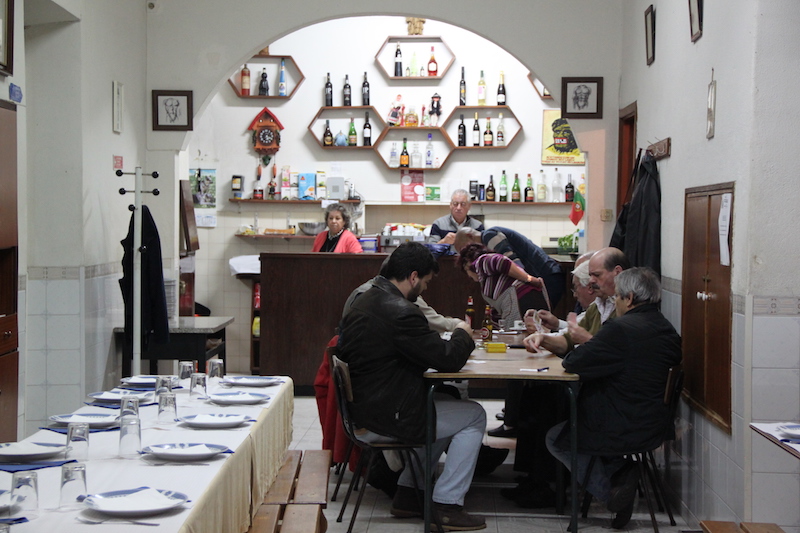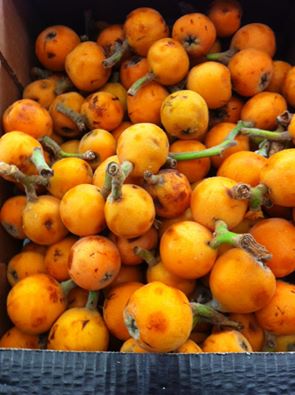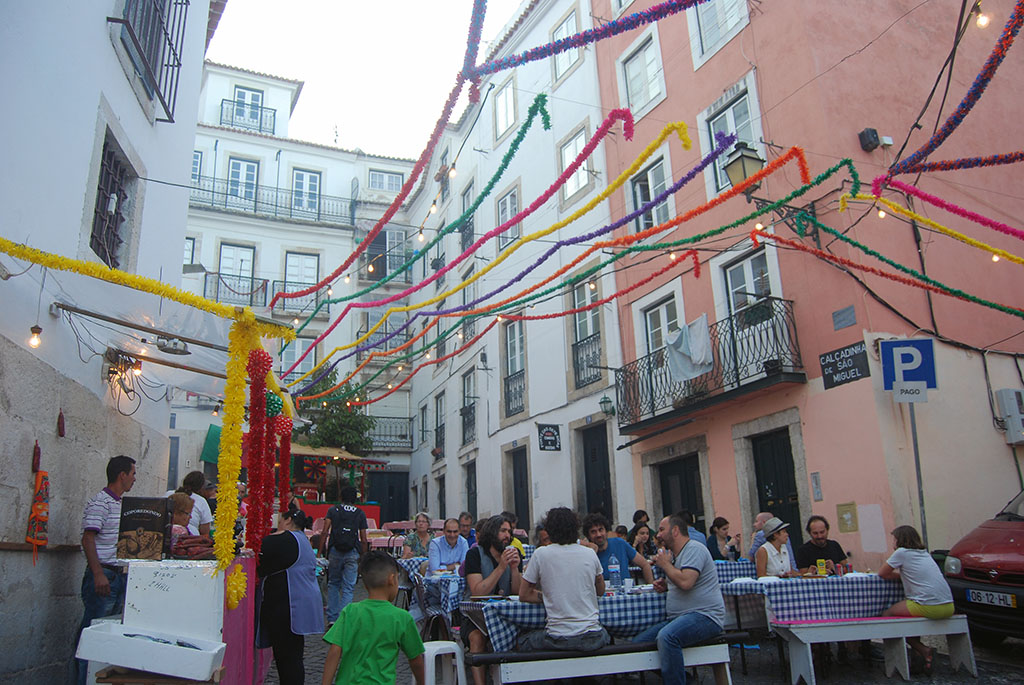We can't find the internet
Attempting to reconnect
Something went wrong!
Hang in there while we get back on track
Search results for "Célia Pedroso"
Lisbon
Lisbon: State of the Stomach 2018
Editor’s note: Traditionally we have published State of the Stomach pieces when beginning coverage of a new city, to provide an introduction to its food culture and how it shapes daily life. But as we dive deeper into the cities we work in, we’re taking stock of what’s changed, particularly as internal and external factors reshape both the culinary and urban landscape. So we thought it was worthwhile to, over the coming weeks, reexamine how some of these cities are eating, which will inform our coverage in the new year. Next up is our look at Lisbon. Back in June, historic Lisbon neighborhoods like Alfama dressed up for the Santo António festival, just as they do every year. It’s a defining moment for the Portuguese capital – one where food, music, local customs, dance and religion all come together for a few joyous days.
Read moreLisbon
CB Book Club: Nuno Mendes’ “Lisboeta,” A Love Letter to Lisbon
Nuno Mendes is excited. He’s standing at my kitchen counter, where laid out before him are pieces of half-moon-shaped dough, each encasing a juicy meat mixture. They’re about to go into a pan filled with bubbling oil. My mom, Lica, is nervous. She is sharing her mother’s recipe for pastéis de massa terra, a traditional Portuguese savory pastry, with the highly esteemed chef of Chiltern Firehouse and Taberna do Mercado in London. He has heard about her mouth-watering pastéis from a mutual friend and decided to see for himself just how good they are. Worried that the dough isn’t quite right, she drops in the first one and the pastry bubbles up crispy, as it should. When it’s finished, she gives it to Mendes, who takes one bite and says, “Wow, these are amazing!”
Read moreLisbon
Best Bites 2017: Lisbon
With new restaurants popping up in this increasingly popular city and so many more disappearing due to rising rents, 2017 was a year of change – both good and bad – in the Lisbon food scene. We mourn those spots that have left us, but also celebrate the arrival of some exciting places helmed by a new crop of young chefs who are highlighting quality and local products and ingredients. Pies at Bel’Empada: Bel’Empada, a tiny restaurant and takeaway in Alvalade, a residential area in the northern part of the city, bakes the most delicious pies with a thin light dough that are bursting with flavor.
Read moreLisbon
CB Book Club: Barbara Massaad’s “Soup for Syria”
Barbara Abdeni Massaad may be an award-winning food writer and photographer, but she is also a humanitarian. After spending quite some time with the Syrian refugees who were living in horrible conditions not far from her home in Beirut, Barbara took her camera and began photographing people in the camps in Lebanon, especially children. This was the start of her book-cum-fundraising project “Soup for Syria: Recipes to Celebrate Our Shared Humanity,” a wonderful collection of pictures and soup recipes that has already raised $500,000. The profits from book sales are donated to help fund food relief efforts through the United Nations.
Read moreLisbon
Harvest Week: Rocha Pears, Goodness to the Core
As the highway speeds out of Lisbon northward, the pastel apartment blocks of greater Lisbon’s northern sprawl give way to plots of farmland. It’s a road with no distinction, one not unlike countless others leaving cities elsewhere. Around 80 kilometers from Lisbon, the highway passes into the region of Oeste; although not readily apparent, Oeste is a place of great distinction. That becomes clearer a bit farther down the road, where on the side of a warehouse the words “Rocha Mundial” are printed beside the giant likeness of the region’s claim to fame, a green pear with light brown spots.
Read moreLisbon
Night Pickers: Harvesting Grapes in Dão
Although it’s the oldest wine region in Portugal, Dão in central Portugal does not have the high profile of its neighbor to the north, the Douro Valley. And yet, Dão is the birthplace of the touriga nacional, one of the finest grapes in Portugal, a country with more than 300 different grape varieties. Considering this claim to fame, we thought the overlooked Dão region deserved a second glance. If we had any doubts about making the trek out to Dão, they were put to bed by André Ribeirinho. A Portuguese writer and wine judge, Ribeirinho knows the best small-scale Portuguese wine producers and champions them on his website Adegga, a platform he founded to review wines and host wine markets.
Read moreLisbon
Pita.gr: The Odd Couple
It has the makings of a sitcom: two itinerant chefs, one Greek and the other Peruvian, meet in Portugal and decide to open up a restaurant devoted to their home countries’ cooking. Rather than pratfalls, though, we get Pita.gr, a charming restaurant where during the course of one meal we can feast on ceviche, fresh moussaka and tiropita (a Greek pastry made of phyllo dough, feta cheese, honey and sesame seeds), all at the same table. Having the chance to eat delicious food from both countries feels like a privilege in this corner of the Margem Sul (South Bank), half an hour’s drive from central Lisbon.
Read moreLisbon
Scoop by Scoop: Lisbon's Best Ice Cream
In summer, there are just a couple of things that lisboetas will queue for: the beach and ice cream. The city is blessed with good places for both, but between the two, we prefer the latter, which in Lisbon tends to be Italian-style gelato, as served in the most long-standing and successful shops in town. Tucked away in a corner of Restauradores, A Veneziana still has the same façade and is run by the same family as when it opened in 1936. The shop is small, with a big esplanada, or terrace, on which customers can sit and enjoy their treats.
Read moreLisbon
Beach Disrupter: Portugal’s Uber of Doughnuts
Every summer, sellers hawking bolas de Berlim – custard-filled doughnuts without a hole in the middle – throng to Portuguese beaches. Plodding across the boiling sand and ringing a bell to announce their arrival, they deliver these beautifully simple pastries to hungry beachgoers, many of whom associate a trip to the coast with the sweet treat. A slew of bolas are sold on the beach each year; the presumed number is almost as eyebrow-raising as the calorie content of a big fat bola filled with custard. It’s no surprise, then, that an app promising to be the Uber of bolas has been an immediate success.
Read moreLisbon
Here Come the Grills: A Lisbon Club’s Sardine Moment
For a few weeks during June, large swathes of Lisbon turn into one extended outdoor cookout. It’s the festival of Santo António, Lisbon’s favorite local saint, and the city celebrates his memory by way of grilling up copious amounts of sardines, so much so that during this period the scent of sizzling fish rolls through the streets of the city’s historic neighborhoods like a bank of fishy fog. In these old-time neighborhoods, the festival also provides residents a chance to play caterer to the masses, with seemingly every local with a halfway decent charcoal grill setting up shop outside their home and grilling sardines for the revelers partying in the streets. The whole scene is a complete departure from the more staid rest of the year and it often feels as if these neighborhood grillers live for just this time, allowing them to play the role of guardians of Lisbon’s most important social tradition.
Read moreLisbon
Bel'Empada: Life of Pie
These days, a good Portuguese-style savory pie is hard to find – even in Portugal. In a country with so many great examples, namely in Alentejo, Beiras or Trás-os-Montes, where pies (or empadas in Portuguese) are beautifully made, it’s disheartening that in Lisbon you’ll find mostly dull and dry versions or disappointing fillings within good pastry. Belmiro de Jesus, a native of Trás-os-Montes, one of the most remote and unspoiled regions of Portugal, always loved the empadas his grandmother would cook for special occasions or festive times of year, like Easter or the August village festival. So when he decided to open an empada-themed restaurant, he used hers as an inspiration but changed the format and developed a thinner pastry.
Read moreLisbon
Com-Tradição: Revolutionary Lunch
The menu at Com-Tradição might not be as revolutionary as the vintage posters on the walls, but it’s certainly democratic and affordable. After all, Com-Tradição is the restaurant of the Associação 25 de Abril, founded by the military men who planned the 1974 Carnation Revolution, the coup that ended Portugal’s fascist regime and restored democracy. Nowadays anyone can become a member of this non-profit association. Besides preserving the spirit of the revolution, it also aims to preserve documents and memories of this historical event. The association is located in a beautiful Bairro Alto old building, whose renovation and interior design were overseen by the renowned architect Álvaro Siza Vieira.
Read moreLisbon
Zé Varunca: Straight Outta Alentejo
In the 1980s and 1990s Bairro Alto was the epicenter of Lisbon nightlife: bars here had the best DJs, and interesting restaurants were opening more often in this neighborhood than in any other in town. Although Bairro Alto lost some of its more compelling spots over the years, it’s still a party district and on a recent upswing, with promising new restaurants cropping up. Among these is Zé Varunca, a notable ambassador for the food of Alentejo, one of Portugal’s best regional cuisines. Having limited resources, Alentejo cooks learned how to go far with a little, deliciously using, for example, stale bread as a staple ingredient along with chouriço or other sausages, pork fat and sometimes a bit of meat.
Read moreLisbon
CB on the Road: The Island Treasures of Madeira
Located in the Atlantic at the same latitude as Casablanca, Madeira may be a small island, but there’s so much to see that it takes three to five days to get a real sense of it. An hour and a half by plane from Lisbon, the capital and largest city is Funchal, a historic town whose claim to fame is a more recent one: it’s where soccer star Cristiano Ronaldo was born (a statue and a museum in his honor can both be found here). Historically one of the first settlements of the golden age of Portuguese exploration, the island became an outpost for trade and ships going to Brazil or India.
Read moreLisbon
Varinas: Lisbon's Vanished Roving Fishmongers
Varinas may no longer be prowling the streets of Lisbon, yet they remain iconic characters of the city. Until the 1980s, one would regularly hear these women loudly advertising the fresh fish they sold out of baskets they carried on their heads as they walked the hilly streets around the Lisbon. “In the 18th and 19th centuries, there was what we call the ‘aveirense invasion.’ They were coming mostly from the Aveiro region in northern Portugal, particularly from Ovar,” explains Appio Sottomayor, a journalist, author and a renowned expert in Lisbon history. (This is why they were known as ovarinas and eventually, once the “o” was dropped, varinas.)
Read moreLisbon
Wine Harvest Week: Quinta do Vallado's Sixth-Generation Douro Boys
Celebrating its 300th birthday this year, the Quinta do Vallado estate, located near Peso da Régua in the heart of the Douro valley, is integral to the history of the region. The current owners are the sixth-generation descendants of D. Antónia Adelaide Ferreira, a legendary visionary and businesswoman who, in the 19th century, changed Douro wines. Francisco Ferreira, the 44-year-old scion of the family, is now leading the wine making of this old estate, which for years was dedicated exclusively to port and is now producing some great red and white wines.
Read moreLisbon
Scoop by Scoop: Lisbon's Best Ice Cream
In summer, there are just a couple of things that lisboetas will queue for: the beach and ice cream. The city is blessed with good places for both, but between the two, we prefer the latter, which in Lisbon tends to be Italian-style gelato, as served in the most long-lived and successful shops in town. Tucked away in a corner of Restauradores, A Veneziana still has the same façade and is run by the same family as when it opened in 1936. The shop is small, with a big esplanada, or terrace, on which customers can sit and enjoy their treats.
Read moreLisbon
Behind Bars: Ginja Sem Rival's Ginjinha Whisperer
Abílio Coelho is a generous man, offering a smile to every customer while serving each of them the most traditional drink in Lisbon: ginjinha. He has spent 44 of his 63 years behind a counter serving the libation. Ginja Sem Rival, the bar he serves it in, like the best places, is a hole-in-the-wall, and the drink is made in-house. Ginja is the actual name of the liqueur, which is made from a sour cherry of the same name. The fruit might not be so sweet but is fortunately well suited to being turned into this smooth drink, which is enjoyed both as an aperitif and digestif.
Read moreLisbon
Building Blocks: Piripiri, the Saucy World Traveller
The small, spicy piripiri, or African bird’s eye chili, is one of Portuguese cuisine’s most unexpected ingredients, one that has travelled thousands of miles across many continents to find its place there. When the Portuguese began navigating around the globe as early as the 15th century, spices like black pepper and cinnamon became some of the most important and expensive goods on the market. Piripiri didn’t reach quite the same renown, but they have influenced many cuisines in their travels East. Initially they were taken from Brazil to Africa, where they thrived. After Vasco da Gama established the maritime route to India, the Portuguese introduced the peppers to Asia, namely India, Thailand and Malaysia.
Read moreLisbon
Fish and the City: The Peixe em Lisboa Festival
Lisboetas can’t get enough of fish and seafood, and the annual Peixe em Lisboa festival celebrates that love with an abundance of food-centric activities. The main event every year finds a handful of Lisbon’s top restaurants competing against each other to see who can create the top fish dish. There is also a food market with some 70 displays and daily events and workshops. It’s a chance to taste some sublime culinary creations and to meet creative local chefs and small-scale food producers from different regions.
Read moreLisbon
Bettina & Niccolò Corallo: The Roast of the Town
Offering some of the world’s purest, most passionately produced chocolate, along with some of the best coffee in Lisbon, Bettina & Niccolò Corallo on Rua da Escola Politécnica in the Príncipe Real neighborhood has changed the tastes and habits of many locals. There’s no milk chocolate available at this family-run shop, only dark chocolate. And yet Portuguese chocolate lovers – who have a notorious sweet tooth – will swoon when one mentions Corallo’s products. As for the coffee, area residents now wait until 10 a.m., when the café opens, to have their morning brew here.
Read moreLisbon
Tempura: Japanese or Portugese
Peixnhos da horta is translated as little fish from the garden; they are actually deep fried green bean tempura and are sampled on our Lisbon Awakens walk. It is believed that tempura was actually introduced to Japan by the Portugese Jesuit missionaries.
Read moreLisbon
Sardines for Santo António: Lisbon's Big Little Fish Fest
The smell and the smoke attract us like a magnet. We can’t see them, but there are sardines being grilled over charcoal somewhere nearby. We are in Largo do Chafariz de Dentro, where the Fado Museum is, and the strong smell of the popular deep-fried farturas (a big churro) goes unnoticed due to the overwhelming – and delicious! – smell of grilled sardines everywhere.
Read more



























